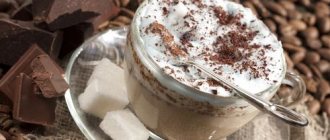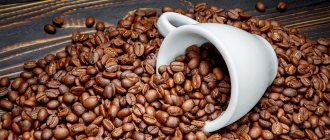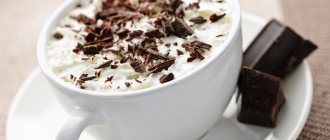How to introduce alternative milk to a coffee shop menu?
Today, alternative milk is more popular than ever. U.S. sales of such milk are expected to reach $34 billion by 2024. But they vary widely in taste and texture. So which Milk Alternative is best for the coffee shop: oat, soy, or maybe almond?
Below we will look at where and how best to use plant-based milk, what types are suitable for a coffee shop, and whether coffee with alternative milk should cost more than regular milk.
Cow's milk alternatives
Onyx Coffee Lab co-founder Andrea Allen frequently competes in the World Barista Championships. According to her, “in recent years, alternative milk has been rapidly gaining popularity.” Many of our clients drink coffee with both traditional milk and plant milk, and find their advantages in both the first and the second.
When you create a menu, it is important to understand why customers choose a particular type of milk. You also need to take into account that oase milk combines differently with different types of coffee. So let's take a look at the main types of herbal alternatives on the market.
Soy milk
For many years this variety was the only plant-based alternative. It's easy to find, inexpensive, and whips well. But not everyone likes its taste and texture, which, moreover, varies depending on the manufacturer. Some are also concerned about its health effects. In addition, according to Andrea, guests of her establishments rarely order coffee with soy milk.
Soy milk curdles when heated and when added to highly acidic coffee. To prevent this from happening, heat it slowly and not to such a high temperature as regular milk. In addition, it is advisable to combine soybeans with not very sour coffee.
Almond milk
Statistically, almond milk is the most popular alternative milk in the world. It accounts for ⅓ of total sales. Almond milk has a distinct sweet, nutty flavor. But not everyone likes it either. Some people believe that almonds overpower the subtle flavors of the coffee itself.
Like soy milk, almond milk curdles when heated too quickly or when mixed incorrectly with coffee. However, according to Andrea, this alternative is one of the easiest to use. In her experience, almond milk is easier to froth than, say, coconut milk.
Almond producers are often criticized for their high water consumption and long-distance transportation of nuts, which has a negative impact on the environment. However, almond plantations still cause less harm to the environment than dairy farms. But for those who want to reduce their environmental footprint as much as possible, there are plenty of other alternatives. If you are concerned about the environment or want to promote your establishment as an eco-cafe, then you should abandon almond milk in favor of oat or soy milk.
Oat milk
Over the past couple of years, sales of oat milk have increased significantly. Its balanced taste and texture make it an excellent alternative to traditional milk. It became so popular among baristas and ordinary consumers that in 2021, Oatly brand products became a real shortage on American shelves - they were sold out so quickly.
According to Andrea, “more and more guests are ordering coffee with oat milk, and if we run out of it, people simply leave without ordering anything.” Oat milk is much easier to work with than other milk alternatives. One downside is that it contains less protein. This leads to rapid settling of the foam.
In addition, lean alternatives are made from coconut, cashews, and rice. But in popularity they are significantly inferior to the milk listed above.
Cappuccino with almond milk. ©Louis Hansel
There are several general rules for working with each type of alternative milk. But it should be borne in mind that the taste and texture of the drink may differ depending on the manufacturer. It all depends on the manufacturing process and the additives that were added to the milk, such as stabilizers and sweeteners. However, on the shelves you can find the most natural options without unnecessary “chemicals”. Also, some brands produce special products for baristas - they whip better and do not separate.
Of course, no one is stopping you from making your own plant-based milk. Another question is, will you be able to prepare a product with the same taste and consistency over and over again, which will harmoniously combine with your menu?
Here’s what Andrea says about this: “If a coffee shop makes its own alternative milk, and it’s good in quality and cost, then why not? But if the ideal taste and consistency cannot be achieved, then it is better to use purchased products with a stable and verified recipe.”
Barista prepares Latte art for coffee. ©Tyler Nix
The many faces of espresso italiano
The appearance of rapid espresso Italiano pleased bartenders the most. Based on the strong drink, they could now prepare dozens of different coffee cocktails. The range of establishments has expanded significantly. Let's count how many types of coffee are prepared on the basis of espresso and what are the features of each.
| № | Drink name | Peculiarities |
| 1 | Ristretto | The strongest coffee drink. Similar to espresso, but its preparation requires half the volume of water with the same amount of coffee. |
| 2 | Doppio | Double shot of traditional espresso. |
| 3 | Trippio | Triple shot of espresso. |
| 4 | Americano (lungo, regular) | America's favorite drink. The amount of water for its production is increased, and the dose of coffee is reduced. Simply put, it's espresso with double the amount of water. The caffeine content in the drink is reduced, which is good for those for whom strong coffee is contraindicated. |
| 5 | Cappuccino | A mixture consisting of three parts: espresso, milk and milk foam. One of the most popular coffee cocktails in the world. |
| 6 | Latte | A mixture of espresso and milk, on top of which there is a layer of airy milk foam. |
| 7 | Macchiato | A shot of espresso is poured into the foamed hot milk from above in a thin stream. A brown spot of macchia appears on the white foam, hence the name of the cocktail. |
| 8 | Mocha | A cocktail of espresso, hot chocolate, milk and milk foam. |
| 9 | Glyase | Cold drink made from espresso and ice cream. |
| 10 | Romano | A little lemon juice is added to the espresso, and the drink is decorated with a slice of lemon. |
| 11 | Con panna | The espresso is topped with whipped cream and sprinkled with chocolate shavings. |
| 12 | Frappe | Chilled espresso shaken with sugar and crushed ice. |
This is the main dozen options! The list goes on.
In the barista's vocabulary there is the concept of shot espresso. This is a professional accessory in the form of a cup with measuring divisions. With its help, the required amount of coffee is determined when making cocktails or serving a serving of the correct size. It is most often used in professional training; experienced bartenders easily calculate the volume visually.
Important: “shot” should not be confused with the term “meal”! Although these are consonant words, they are from different areas. Meal is the coffee grounds that remain at the bottom of the cup after drinking coffee. This is what fortune tellers use to determine your past, present and future.
How many types of milk will be enough?
When it comes to plant-based alternatives, everyone has their own taste preferences. In addition, each type of milk has its own pros and cons. Therefore, it makes sense to have several options ready. “Today, coffee shop customers expect to see at least 2-3 plant-based options on the menu,” notes Andrea.
But you shouldn’t buy all the types of alternative milk that are available in stores. As with regular milk, it is important not to overdo it. Otherwise, the product will spoil before it can be sold. Keep track of how quickly ingredients are used up and replenish your stock in time.
Variant of milk coffee drink. ©Nathan Dumlao
On the issue of allergies
Don't forget that nut and soy allergies are some of the most common. Therefore, at Onyx Coffee Lab establishments, baristas cook with almond, coconut and oat milk. Allergies to these products are quite rare, and such milk goes well with coffee.
It is important that alternative milk drinks must be prepared separately from the rest. Such milk should not accidentally end up in regular drinks. Even traces of these products are enough to cause an allergic reaction.
“Make any drink as if an allergy sufferer ordered it,” advises Andrea. To avoid accidental contamination of allergens in coffee, her establishments have separate equipment for each type of milk. This, of course, will require additional costs and employee training, but it will allow you to keep up with the times.
The barista carries 2 drinks. ©Nathan Dumlao
Barista training
The more coffee preparation options you offer, the more work you will have to do on drink recipes and barista training. To maintain the proper quality of coffee and the reputation of the establishment, employees must be able to froth different types of milk and “draw” on the foam from them; know which alternatives go best with which type of coffee.
The most important thing to pay attention to is heating, as different foods react differently to high temperatures. A barista must know and be able to prepare such drinks at the proper level.
However, since coffee with almond or oat milk is ordered less often than regular coffee, employees will have fewer opportunities to learn everything they need to know on the job. Therefore, in order to be ready for any orders, you will have to devote more time and attention to training itself.
A barista steams milk. ©René Pollock
Historical reference
In Europe, coffee was tried by the end of the 16th century, but only 100 years later the tradition of drinking it with milk began to take shape.
It is believed that she was born in France, where the new drink was called “café au lait”. But the latte, beloved by many, is its Italian relative.
The recipe, according to historians, was born in an unremarkable family during breakfast. Adults, as usual, drank black coffee, and for children, in order to introduce them to this drink (in those years there was no question whether children could drink coffee), hot milk was added to their cups. What we ended up with is what we know as “latte,” translated as “stained milk.”
Different nations have their own names: in Poland - “kawa biała” (“white coffee”), in the Netherlands - “koffie verkeerd” (“wrong coffee”), the British say “coffee with milk” (“coffee with milk”) , and in the American coffee chain Starbucks the name “misto” (from the Italian “mixed”, “mixture”) is in use today.
There are also different ways to obtain this drink. In Europe, it is prepared from traditional espresso by adding warmed milk. An Americano with milk is usually a drink prepared in a coffee machine using the drip method. Read more about what Americano coffee is in our article.
Should coffee with Alternative milk cost more?
Many coffee shops overprice such drinks. But as their popularity grows, this is no longer necessary. Plant-based milk may be more expensive and sold less often, but by raising prices, you risk losing customers. Of course, this approach will bring short-term benefits. But a reasonable price will allow you to win a lot of regular visitors who will bring you more money in the long run.
As an option: you can reduce the cost of plant-based milk by buying it in bulk and with a long shelf life.
The barista prepares a latte. ©Andrew Tanglao
Alternative milk must be released
Clearly indicate on your menu what types of plant-based milks you offer. This information should immediately catch the eye: this will make a person more likely to order a more expensive drink based on alternative milk instead of a regular pour-over. In addition, if you offer a client’s favorite milk, then it is possible that he will come to you for the second and third time. The same applies to allergy sufferers, who sometimes find it difficult to find a suitable alternative.
Describe the taste, texture, or even environmental friendliness of a particular plant milk in the menu. Just like many coffee shops indicate the degree of roasting and the country of origin of the beans on the menu.
Plant milk is a unique ingredient that opens up endless fields for experimentation. According to Andrea, all of her establishments serve a special drink based on dairy-free alternatives, and it always becomes a bestseller. Customers perceive such a product as an independent drink, without thinking of it as an alternative to regular coffee.
Latte art. ©Frankie Photography
Take the time to explore plant-based alternatives. Let baristas practice working with different types of milk. Invite them to come up with their own drink recipe. This will allow you to expand not only the menu, but also significantly expand the circle of guests of your establishment!
How are things in Russia?
Below is research conducted by the Eat Better team
New restaurants and cafes offering vegetarian and vegan menus are opening in all major cities of Russia. In Moscow and St. Petersburg, such establishments have already become part of the restaurant business.
In this regard, representatives of the non-profit project “Eating Better” studied the offer of chain coffee shops and bakeries to understand which of them best correspond to the trend in the choice of people who are increasingly interested in plant-based dishes.
Which cafes have the best plant-based options?
Based on the results of the study, we especially highlighted the cafes “British Bakeries” , “Coffee3” , “Daily Bread” , “Coffeers” , “Starbucks” and “Shokoladnitsa” . In addition to the possibility of making coffee with several types of plant-based milk (the most popular are soy, almond, and coconut), these cafes offer desserts, as well as complete main courses without eggs or dairy products.
In contrast, MacCafe , Volchek's Bakery , Sweet Tooth, and Leningrad Bakeries currently do not offer plant-based milk or plant-based desserts. At the same time, representatives of Volchek’s Bakery said that they plan to introduce plant-based milk in their Coffee Varim .
Availability of plant milk
In 36 of the 42 coffee shops and bakeries we reviewed, you can order coffee drinks with plant-based milk. This shows that most establishments are already meeting the demands of people eliminating dairy products from their diets.
Plant milk
At least six cafes charge extra for adding plant-based milk. However, in 2021, in the case of using, for example, oat milk, this is already unnecessary.
If 3 years ago it was difficult to buy plant-based milk in a store at a price competitive with cow’s milk, now the situation has changed radically. Local producers have appeared on the Russian market (Primal, Nemoloko, VolkoMolko, Green Milk, Bite), as a result of which it has become possible to buy plant-based milk at a price that is now several times lower.
Translation of the article by Thomas Storr “How to Include Non-Dairy Milks in Your Coffee Shop Menu“
How true espresso is prepared
Let me point out right away that you cannot brew espresso in a Turk. It won't work with instant coffee either. But the so-called “carob espresso” is quite possible at home. A carob-type coffee maker makes excellent espresso and is the most affordable and suitable for everyday use. Therefore, we will focus on this option.
Pour the finely ground coffee into the holder, level it and tamp it down with a tamper. Two new words at once!
Reference. The holder is a removable part of the coffee machine, similar to a ladle. It is also called a horn, which is why the unit is called a horn. In the “ladle” a coffee tablet is formed, intended for preparing the drink. It is preferable that it be made of metal.
A tamper is a device for compacting coffee in a holder. A small hand press that plays an important role in preparing the drink. Proper compaction of coffee will ensure uniform wetting of the coffee with water during preparation and optimal extraction, i.e. extraction of all useful soluble compounds from ground grain. Hence, getting a good taste of the drink. Each barista has his own personal tamper.
Let's continue. We insert the holder into the coffee maker. In its sealed vessel, the water has already warmed to a temperature of 92 - 94°. We press the button and under a pressure of 9 bar (atmospheres) it rushes through the coffee tablet located in the horn and carries with it all the valuable natural components. As a result, a magnificent dark espresso with thick light foam will pour into a cup (preheated) placed under the spout of the coffee maker in 30 seconds. The aroma is stunning! Especially if you put high-quality Arabica coffee in the holder and ground it immediately before adding it.
Please note: the espresso standard requires the inclusion of only two components in the drink - ground natural coffee and water. On top of the liquid fraction there must be a dense, homogeneous crema foam, which in Italy is called coffee bean juice. It is formed under the pressure of hot water and its dissolution of carbon dioxide.
Classic espresso recipe:
- 7 – 8 grams of ground natural coffee (Arabica or a special mixture for making espresso, which contains Arabica varieties mixed with no more than 20% Robusta);
- 50 – 60 ml of clean filtered water.
- It is allowed, but it is not recommended to add a sweetener to the drink.
The energy value (calorie content) of 1 serving is 2–3 kcal, it contains 50–70 mg of caffeine. It is recommended to drink no more than 7 cups of espresso during the day.











